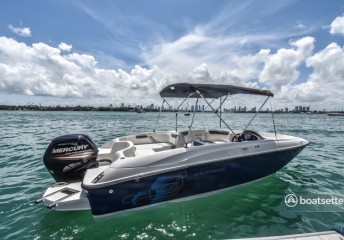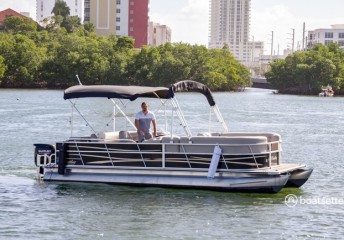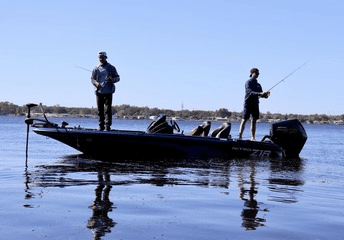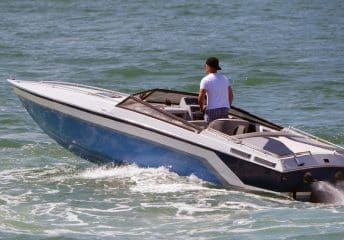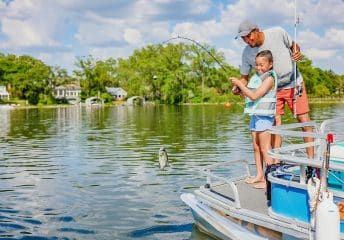How to Register Your Boat in Your State
Last Updated on October 23, 2025 by Boatsetter Team
If you’re ready to start hosting on Boatsetter or just bought your first boat, one of the first steps you’ll need to take is registering it with your state. Think of registration as your boat’s passport — it proves ownership, keeps you compliant on the water, and opens the door to legally listing your boat for charters and rentals.
While every state has its own process, the overall steps are straightforward once you know what to expect. Here’s how to register your boat in your state — plus a few Boatsetter insights to make the process smooth and stress-free.
Why Boat Registration Matters
Boat registration is about more than paperwork. It helps ensure:
- Proof of ownership: Registration connects your vessel to you, protecting against theft or disputes.
- Legal compliance: States require registration for most powered vessels — even electric or jet-drive boats.
- Public safety: Registration numbers help identify vessels in emergencies.
- Charter readiness: If you plan to list your boat on Boatsetter, registration (and in some cases, documentation) is required to host legally.
Failure to register can lead to fines, insurance issues, or delays in getting your listing approved — so it’s best to get it done early.
Step-by-Step: How to Register Your Boat
Step 1: Find Your State Agency
Each state handles boat registration through a different agency — typically the Department of Motor Vehicles (DMV), Department of Natural Resources (DNR), or Fish and Wildlife Division.
Here are a few examples:
- Florida: Florida Highway Safety and Motor Vehicles (FLHSMV)
- Texas: Texas Parks and Wildlife Department (TPWD)
- California: California DMV
- New York: New York DMV
- Washington: WA Department of Licensing
- Illinois: Illinois DNR
If you’re unsure where to start, search “boat registration [your state]” — most official sites will guide you through online, mail-in, or in-person registration options.
Step 2: Gather Required Documents
Commonly required documents include:
- Bill of Sale or Manufacturer’s Certificate of Origin (MCO)
- Proof of payment or tax receipt
- Hull Identification Number (HIN)
- Valid ID and proof of residency
- Title or previous registration (for used boats)
- Coast Guard documentation (for larger vessels, 5 net tons or more)
If you’re purchasing a used boat, double-check that the HIN matches all paperwork — mismatches can delay approval.
Step 3: Complete the Application & Pay Fees
Most states now offer online forms for convenience. Fees vary depending on boat length, propulsion type, and whether the vessel is new or transferred.
Typical ranges:
- Under 16 ft: $25–$50
- 16–26 ft: $50–$100
- 26–40 ft: $75–$150
- 40+ ft or commercial vessels: $150+
Boatsetter Tip: Some states offer multi-year registration discounts — a smart choice for long-term owners planning to host through Boatsetter.
Step 4: Display Your Registration Numbers
Once approved, you’ll receive:
- A registration certificate (keep this onboard).
- A validation decal (typically renewed annually or biannually).
- Your registration number (to be displayed on both sides of the bow in block letters, contrasting with the hull color).
Follow your state’s guidelines for placement and size — non-compliance can result in citations.
Step 5: Renew Regularly
Boat registrations typically expire every 1–3 years. Renewal notices are usually mailed or emailed before expiration.
Boatsetter Insight: Add your renewal date to your Boatsetter profile calendar — staying current keeps your listing compliant and avoids booking interruptions.
Special Note: Documented Vessels
If your vessel is over 5 net tons and U.S.-flagged, you can opt for U.S. Coast Guard documentation instead of (or in addition to) state registration.
This is common for:
- Charter and commercial vessels
- Yachts traveling interstate or internationally
Even if your boat is documented, most states still require a Certificate of Local Operation or annual tax decal — so confirm local compliance before listing.
Learn more at the U.S. Coast Guard National Vessel Documentation Center.
Hosting on Boatsetter After Registration
Once your registration or documentation is finalized, you’re officially ready to list your boat on Boatsetter. A few quick reminders:
- Upload clear photos of your registration or documentation during onboarding.
- Ensure your vessel meets all local and Coast Guard safety requirements.
- Keep your registration certificate onboard at all times.
- If you operate charters, verify your captain’s license and local operating permits.
From there, you can start hosting guests — whether it’s sunset cruises, fishing trips, or private events — and earn income while sharing your love of the water.
Final Thoughts
Registering your boat might seem like red tape, but it’s really the first step toward freedom on the water — and financial opportunity as an owner.
Every state’s process varies slightly, but with the right documents, a little preparation, and a clear plan, you’ll be fully compliant and ready to start your boating business with confidence.
Get registered, get listed, and start hosting guests at Boatsetter.com/list-your-boat.

Boatsetter empowers people to explore with confidence by showing them a world of possibility on the water. Rent a boat, list your boat, or become a Boatsetter captain today.

